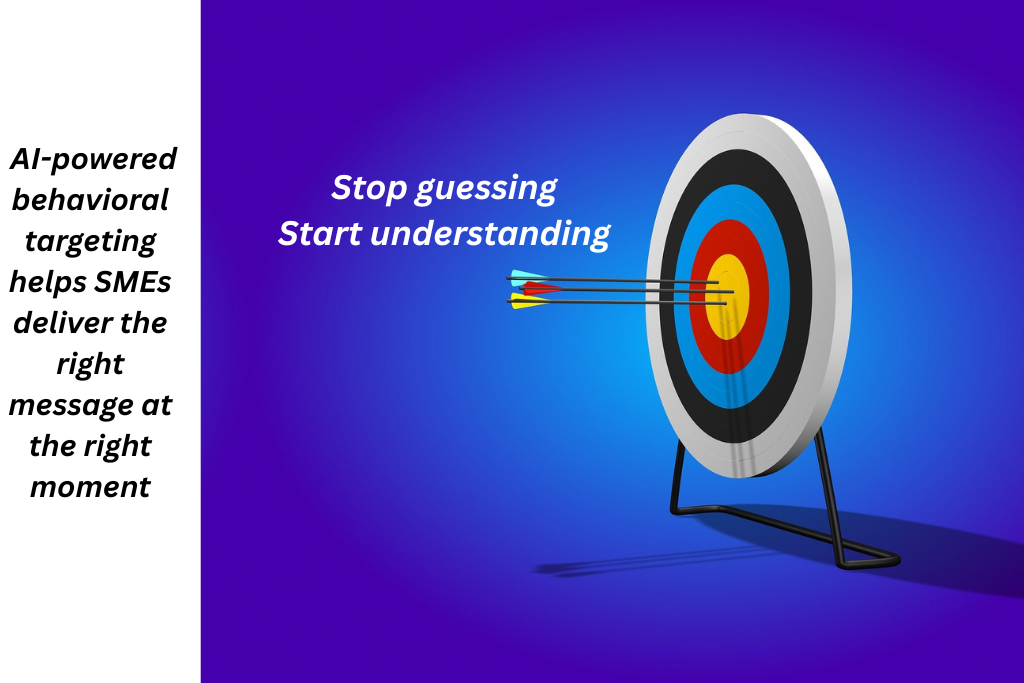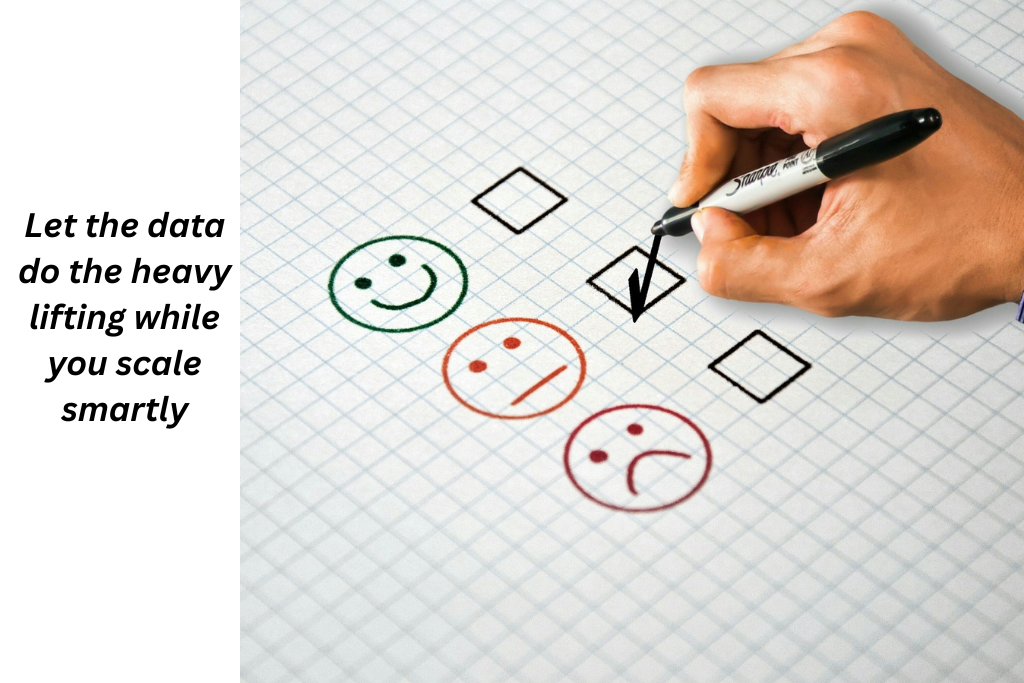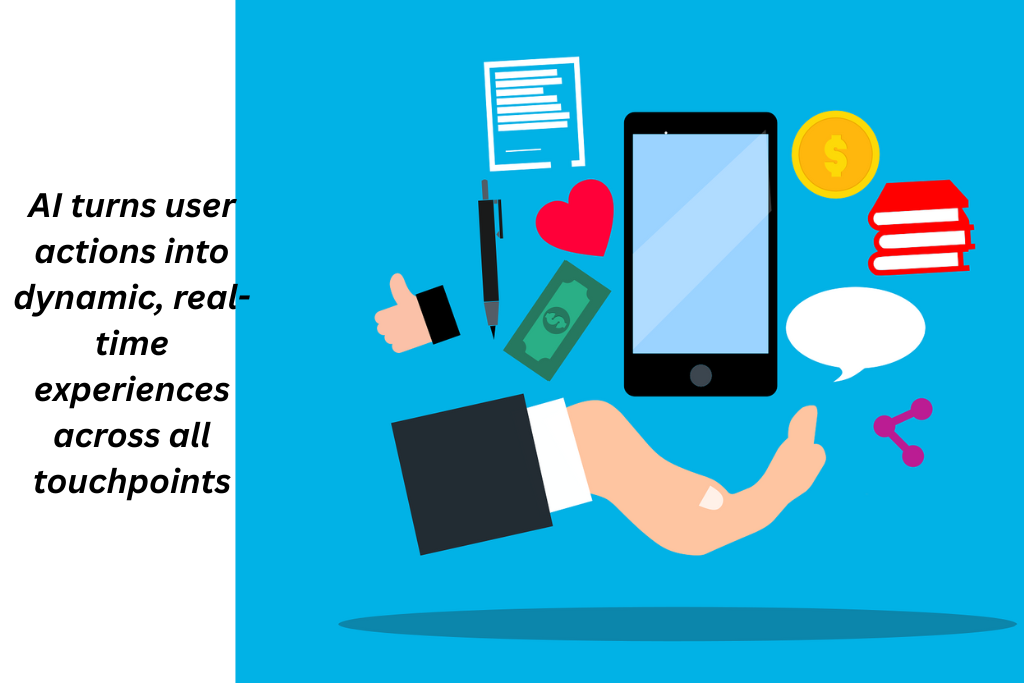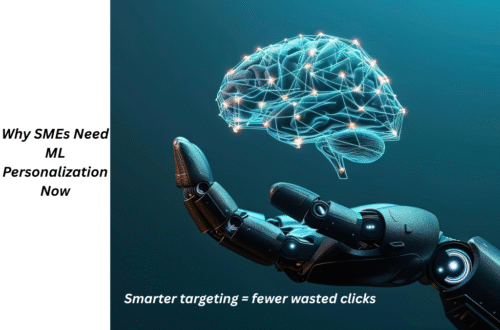
Why SMEs Should Use Behavioral Targeting with AI?
Behavioral targeting with AI is a marketing strategy that uses AI to understand customers’ actions. This means that instead of using their basic traits, such as age, gender, and location, behavioral targeting assesses their digital touchpoints. With the help of AI, it becomes easier to see what they are doing across your website, emails, and other social platforms. In this article, we will understand how it works for SMEs. First, let’s explore the common behavioral data points that are used in targeting customers. This include
- Page views are used to check how often someone visits a page
- Scroll depth to see how far they go down on a page. This indicates their interest level
- Purchase history to know what they bought, when, and how frequently they made a purchase
- Abandoned carts show items added to the cart but not purchased
- Email open and click rate to see the emails they click on and engage with
Difference Between Traditional vs. AI-Enhanced Behavioral Targeting
In traditional targeting, when a customer leaves a cart, you set a basic reminder 24 hours later. While in behavioral targeting with AI, the system analyzes cart, browsing behavior, and purchase history. AI then sends a personalized offer with a relevant product bundle at the best time.
| Feature | Traditional Behavioral Targeting | AI-Enhanced Behavioral Targeting |
| Setup | Manual Rules, for example, if the cart is abandoned, then set a reminder | Automated with predictive modeling |
| Data Use | Limited to recent, visible actions | Analyzes patterns across channels and time |
| Updates | Static segments, updated occasionally | Learns and updates in real-time |
| Personaliztion | Generic follow-ups and batch emails | Hyper-personalized content and timing |
| Scalability | Time-consuming as the audience grows | Scales effortlessly across thousands of users |
How AI Supercharges Behavioral Targeting?
In behavioral targeting with AI, the user data is turned into real-time intelligent decisions. These smart and informed decisions help brands deliver the right message at the right moment across multiple channels. Here’s how behavioral targeting with AI works:
Real-time Data Analysis
Traditional tools collect behavioral data to act on it later. While AI processes this data instantly and:
- Tracks clicks, scrolls, and searches in real-time
- Adjusts recommendations or content in real-time
- Enables just-in-time interventions. This includes popups, chatbots, and personalized offers.
Based on its analysis, it recognizes customers’ buying patterns and enables predictive modeling. Which means that AI doesn’t just react to customer behavior, it anticipates. It detects patterns in behavior across users’ purchases. After that, it predicts what a user is likely to do next. This prediction is about users’ preferred products, they will churn, or are likely to buy.
Dynamic Content Generation Based on User Behavior
Behavioral targeting with AI helps you to personalize more than just product suggestions. You can create dynamic content to offer a fully personalized experience to customers. This content includes
- Product descriptions, ad headlines, or email subject lines that adapt to users’ interests
- Change website banners and CTAs based on past actions
- Chatbots adjust tone, language, and answers according to user behavior
Multi-Channel Behavior Syncing
AI connects the dots across platforms and devices. It recognizes that a user who clicked an ad on mobile may later browse your site on desktop. After this assessment, AI coordinates messaging across all channels. It ensures consistency and context, no matter where the user interacts. This creates a seamless experience across all touchpoints and boosts engagement.
Practical Use Cases for AI-Powered Behavioral Targeting
AI is helping businesses of all sizes to turn behavioral data into relevant and high-converting interactions. Here are the five use cases that you can also implement to improve your strategy today.
AI can detect who’s visiting your site and instantly tailor content based on their past behavior. For example,
- A new visitor will see a first-time shopper discount
- A returning customer will see items from their last browsing session
- A loyal buyer, then he will see a VIP offer or points balance
Along with that, rather than showing the same “Top Selling” products to everyone, it uses purchase history to recommend products. Behavioral targeting with AI also suggests complementary or upgraded products. It also adjusts recommendations based on location or weather.
With this strategy, you can also fine-tune your emails and ad retargeting campaigns. It’s because it adjusts dynamically depending on the conversation. This gives you better results on better ROI on paid media. 
How SMEs Can Get Started with AI Behavioral Targeting?
Diving into behavioral targeting with AI does not mean initiating a full tech overhaul. For SMEs, the smartest way to begin is to start small and measure the impact. Here’s how you can do it too:
Take a Start with One Channel
Instead of trying to personalize everything at once, pick a single channel where you already engage your audience. For example, you can set up emails as abandoned cart reminders and follow-ups. You can also personalize the website’s homepage based on who’s visiting.
Use Freemium Tools
Many AI tools, such as Klaviyo, Mutiny, and Segment, offer starter-friendly plans. Instead of getting expensive plans, try out and take advantage of free trials to test ROI before you invest. Also, prioritize tools that connect with your existing stack.
Conclusion
Behavioral targeting with AI from a basic reactive strategy into a proactive intelligent engine that drives better results. It increases engagement and conversions by showing users what they are interested in.






